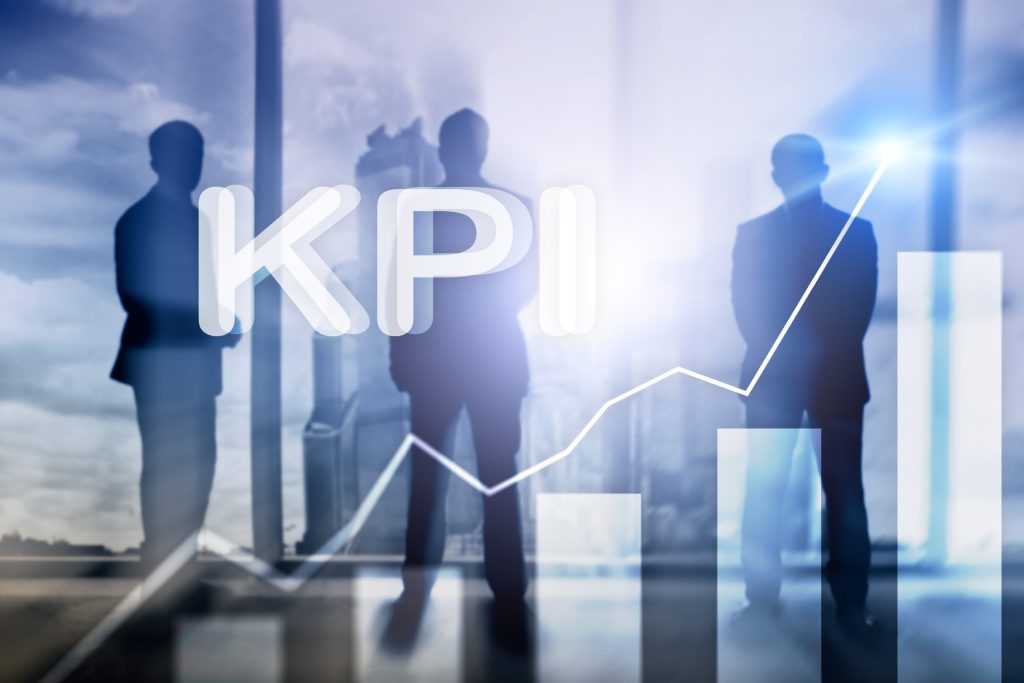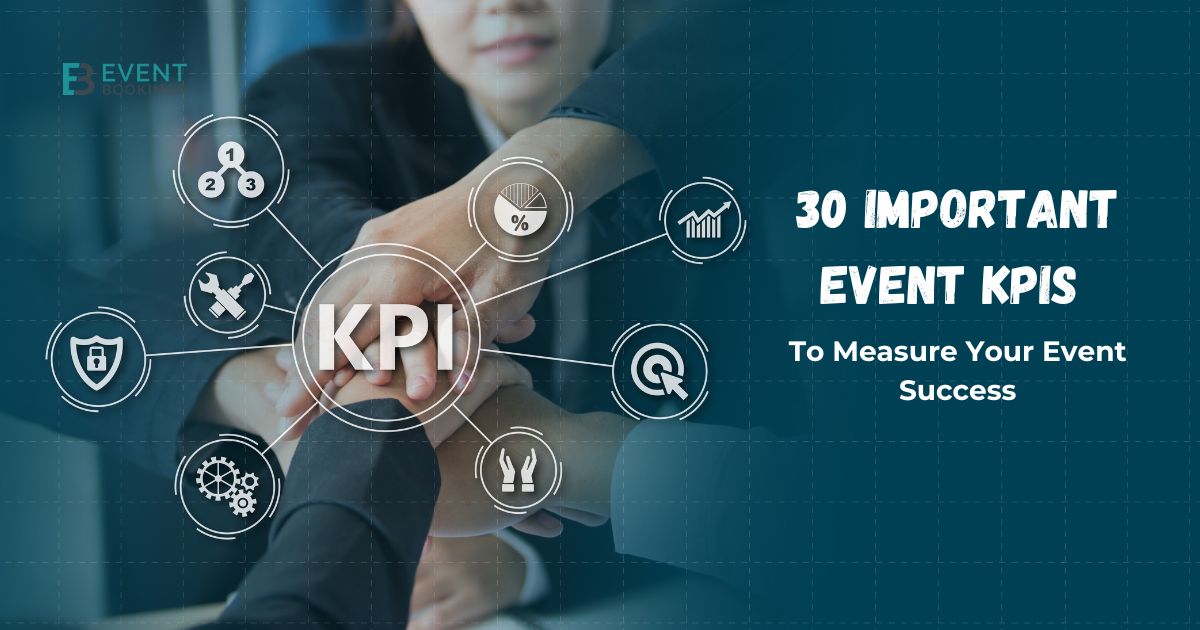KPIs (Key Performance Indicators) for events are a great tool to measure certain aims and objectives of your event and assess its performance. KPIs to measure are typically established as an additional goal and budget-setting method at the start of the event planning process.
Fulfillment of event KPIs measures event success. This article has all the information you need to define KPIs for your events, whether you’re just starting out with event planning, organizing your activities, or composing an after-event report for upcoming events.
1. Registrations
Tracking registrations lets you determine whether you’re on track to meet your attendance targets even before the event begins. A registration delay indicates whether you should step up your marketing to get more people to sign up.
While tracking event registrations, look for sign-up increases and mimic the marketing tactics that encourage attendees to click the “register now” button. Additionally, look for ticket-type registrations and event specials, such as early bird pricing, to maximize future registration campaigns and draw in even more people.
2. Registration by tickets
Another method to be more specific with your registration data is registering by kind of ticket. By breaking out registration performance by ticket type, you may better understand which ticket kinds and pricing points attracted the most attendees. This will also assist you in understanding the proportion of attendees participating in various formats if you combine an in-person strategy with a virtual component. With the aid of this information, you can better plan your upcoming event and provide tickets that are more specifically targeted.
3. Event surveys
Event data collection doesn’t have to stop after the event is done. A survey is an essential tool for determining participants’ feelings at every step of your event.

Pre-event: Distribute surveys beforehand to learn which speakers and sessions your guests look forward to most. In addition, you may ask guests for recommendations on what kinds of food and beverages to provide as well as suggestions for entertainment and activities.
At the event: Use surveys to gather information in real time about what is and is not working at your event. This will allow you to make necessary adjustments as needed.
After the event: Distribute a survey to your participants to find out how they felt about the event as a whole and to get ideas for making future events even better. Since each group has different demands and performance criteria, we advise delivering separate surveys to exhibitors, sponsors, and attendees.
4. Total engagements
One of the most important KPIs for determining whether your event’s sessions, networking opportunities, and other activities are well-received by participants is tracking their level of participation, both in person and virtually. The good news is that your event management technology allows you to monitor these encounters immediately.

The greatest event technology mobile apps for in-person events, virtual event platforms are fully furnished with robust engagement dashboards that let you monitor the aggregate count of all user actions, such as clicks through to agenda sessions, sponsor banners, or landing pages, as well as the number of conversations, connections, social media posts, and other activities.
5. Average sale value
Calculate the average price of the goods and/or services sold due to the event. Compare it to information from past occurrences. In order to identify the top performers at events and staff subsequent events appropriately, you might also compare the average sale value per sales representative.
6. Total sales value
Determine the total amount of goods and/or services sold due to the event. Examine the event’s success in relation to past statistics and other marketing channels. This will support your event ROI evaluation.
7. Sponsorship satisfaction
All kinds of events need sponsors to be funded in order for them to receive quality leads, increase brand exposure, and increase income. But in order to keep sponsors coming back year after year, you’ll need to show them that their money is well spent in supporting your event.
Event technology allows you to monitor event analytics, such as the number of planned meetings and follow-up requests, as well as hits to sponsor banners, landing pages, or CTA buttons.
8. Sponsor revenue
Sponsors help in a number of ways, such as monetary contributions or in-kind gifts of goods and services. Don’t forget to factor in any sales and discounts on your sponsorship packages. Account for any expenses spent if you held an auction to raise money for the in-kind contributions you were given.
9. Speaker engagement
The audience ultimately decides a speaker’s performance. A presentation is unsuccessful if the speaker fails to connect with the audience. The number of session views or session ratings can be used to determine the level of interest in a speaker. Offer methods for participants to interact with the speaker after the event, such as questionnaires conducted after the event or real-time audience responses.
10. Social media engagement
By creating an event hashtag, you may collect a plethora of information from social media about what people say about your gathering.

Social media may be utilized to measure attendees’ interaction with sponsors in addition to hashtags; this is particularly crucial if you’ve provided it as an activation. You can give precise figures for items such as:
- How many people engage with sponsored content on your social media pages?
- Which certain messaging works the best?
- How many new fans joined your account after you mentioned a sponsor in a post?
- The quantity and quality of comments made on a post about a sponsor
11. Social mentions
Monitoring social media mentions is a fantastic KPI for observing how people naturally talk about your event. You can use social media management tools like Hootsuite to track mentions on Instagram, Twitter, Facebook, and other social media channels.
Create and publicize a straightforward hashtag for the occasion. Additionally, look at your event platform’s social analytics because some consumers would rather interact directly with event sponsors and other attendees.
12. Net Promoter Score (NPS)
The top KPI for customer experience measurements is Net Promoter Score (NPS), which is based on the response to a single question: “How likely are you to recommend this event to a friend or colleague?” NPS is a crucial tool for millions of businesses to gauge how their clients see them.
In short, participants rate the question on a range of 0 (very unlikely) to 10 (very probable). NPS divides respondents into three groups in order to calculate the score: promoters, passives, and critics. Strong customer loyalty and satisfaction are correlated with a high NPS.
13. Conversion rate
Conversion can relate to a number of different activities during an event, including lead generation, ticket sales, and attendance registration. The conversion rate may be found using the following formula once the conversion objective has been established:
Conversion Rate is calculated as (Number of Conversions / Total Visitors) × 100.
Your conversion rate is a good way to gauge how well your marketing plan or event landing page is working. The number of visitors that interact with a particular piece of content, such as downloading an e-book, seeing a video, or clicking on an article, may be determined by looking at conversion rates.
14. The number of customers generated
It’s possible that your event is a component of a larger initiative to turn guests into loyal customers. In such a scenario, tracking the proportion of event participants who converted to prospective or established leads might be a crucial key performance indicator.
Keeping an eye on this is crucial if you want to attempt to retarget these event participants for upcoming seminars, sales, goods, and other events. Gathering insightful data from your audience for your upcoming campaign creates a pool of possible new customers, bringing us full circle to the significance of gathering insightful event feedback.
15. Cost per attendee
The digital trail makes it easier to track attendance costs for entirely digital events. Advertising networks provide easy access to your cost per acquisition. Additionally, monitoring the overall number of attendees is made simpler and more precise with the help of event registration platforms like EventBookings and Eventbrite.
16. Event revenue
The statistic that many organizations end up focusing on exclusively is revenue. While it is crucial, you must ensure you see your financial event actions within a larger framework; there is always more to consider.

Return on investment (ROI) can be easily calculated. First, deduct the entire expense from the event’s earnings. Then, divide this by the event’s overall cost. Next, multiply the result by 100 to obtain the percentage.
The return on investment you anticipate from the event will be your key performance indicator.
You should consider the long-term picture in addition to each event’s financial performance. When holding an event for the first time, the return on investment may be low, but you may anticipate that it will rise in the future as the event gains more traction.
It’s also important to consider how your event’s various sectors perform: were attendees willing to pay for tickets, food, merchandise, and other items on multiple websites?
17. New and returning participants
The number of new and returning attendees can indicate whether your event or organization draws in new attendees or keeps hold of current ones. A balance between new and returning participants shows sustainability. A good measurement’s metrics are specific to your event. Event experts advise a decent ratio of 30% repeat and 70% new business.
18. Revenue by promo codes
Knowing where your income comes from and what campaigns work best can help you assess your event’s effectiveness. Promotional coupons might also provide data about your attendees. Analytics, such as the frequency with which particular codes are utilized, may tell a unique tale.
You can view the promo code that generated the most sales tickets and ascertain which marketing campaigns were effective by looking at the campaign, platform, or company that used their promo to get people to the event.
LinkedIn is a wonderful way to reach your event audience wish to spend more money on LinkedIn advertisements going forward if, for instance, a discount code was shared on the social media site and resulted in the highest number of registrations.
19. Active community members
This measure can help you identify which guests are more engaged and facilitates monitoring community activity levels. For example, you may identify an active community member by counting the number of pages read, the amount of time spent in sessions, or the quantity of chat messages delivered. Such information helps determine the best methods to engage participants within the platform and optimizes the overall event experience.
20. Attendee feedback
Surveys and post-event assessments provide feedback on participant experiences that help you pinpoint your strengths and shortcomings. Recurring attendance and social media activity are examples of indirect measures that also show satisfaction levels. Positive word-of-mouth, repeat business, and recommendations for the event are more likely to come from satisfied guests.
By knowing guest preferences, subsequent events may be tailored to their tastes, and a devoted following can be developed. Thanks to this comprehensive approach to measuring satisfaction, your event will have a greater overall effect and continuous development.
21. Pipeline generated
This measure is a nice addition to the number of qualified sales leads, particularly in the B2B events industry. Linking fresh lead generation/open sales prospects and their projected monetary worth is a crucial indicator to discover and analyze if revenue is your event’s main objective. Your sales team can raise this amount for you if the appropriate attribution is linked to a contact or opportunity.
22. Attendee demographics
Examining the demographics of attendees may provide important information about who is attending, what they are interested in, and what they need. This data may guide decisions about event content, marketing tactics, and the entire event experience. The following demographic data about attendees is provided: age, gender, location, and employment.
23. Customer retention
People regularly enter and exit digital interactions because they move quickly, and their attention spans are usually short. Measuring “Audience Retention” is crucial for determining how well your material engages readers and performs overall.
A criterion for what constitutes a solid performance may be defined by setting a retention benchmark. For example, the number of participants that stay involved and participate the entire time may be used to gauge attendance engagement and retention. This measure gives you important information about how successfully your content draws in and retains the attention of your online audience.
24. Attendee geography
If you want to target your advertising efforts for your next event, you can monitor this valuable KPI to determine where your attendees are coming from. If you’d like to expand, you may also utilize this data to identify additional cities where you’ll probably succeed.
25. Profit
The events sector may be tremendously profitable, but it can also be incredibly expensive. Because it will be your events business’s lifeblood, computing for your profit is essential. Determine your entire revenue to figure your profit. This covers every revenue stream from your event, such as exhibitor fees, ticket and retail sales, etc.
Subsequently, take out all of your event-related charges. Expenses include things like marketing, rent, payroll, and so on. Subtract the whole cost of income from the entire cost. This is what you’ll make. Don’t forget to add taxes and fees to your net profit calculation. Consider your discounts and returns as well.
26. Customer loyalty
Acquiring a devoted customer following is an endless blessing. Imagine having a group of devoted followers who return to your event year after year. A devoted community demonstrates strong ties to your brand, content, and experience.
Is the customer loyalty score now high enough? How can event planners gauge patron loyalty? Speaking with your audience is one approach to gauge their level of loyalty.
You can have two sets of chats. The newbies to your event might be the first group you approach. Find out what attracted them to your event and what they found most enjoyable. Recognize their wants and devise the finest strategies to satisfy them in the future.
Your audience, who have already invested time or energy in you, can make up the second group. One way to find out is whether or not they were greatly enhanced or affected by attending events. Another question is what attracts people to your events again and again.
27. Turnover percentage
Evaluate the number of individuals who signed up and the total number of attendees for your event. Your turnout rate may show you various aspects you need to consider, such as scheduling or competition. It can also mean you haven’t done enough to promote your event. To remember your registrants, consider including email reminders for the event.
28. Sales Qualified Leads (SQLs)
Measuring the number of qualified leads your event generates is a good way to gauge its performance if you want it to produce prospects for your sales force. Before assessing this KPI, make sure you have defined criteria for a qualified lead since this may vary depending on your business. A qualified lead might be in a certain industry, hold a management position at their firm, work for a large organization, or show a clear demand for the service or product your business offers.
29. Email marketing engagement rate
An event’s future success largely depends on how it is promoted. How you organize your outreach marketing approach for your company will greatly influence the attendance rate. Your email marketing efficiency rates are one of your key performance indicators.
If the email asks recipients to click on a link or registration form, you may measure the open rate or click-through rate to determine the number of recipients who truly responded to your call to action. This will enable you to assess the effectiveness of your event marketing campaigns.
30. Content engagement
Whether it’s a conference or a festival, a tone of material will be available for participants to read or view on your schedule. Make sure to review the articles that garnered the highest interaction and views. This can help you determine what appeals to your audience and what potential sponsors might find interesting.
Frequently asked questions
Key Performance Indicators (KPIs) are quantifiable measurements showing how effectively a company accomplishes key business goals. To measure a KPI, follow these steps:
Define Clear Objectives: Identify what you want to achieve with your KPI.
Select Relevant KPIs: Choose KPIs that align with your business goals and objectives.
Collect Data: Gather data through surveys, analytics tools, CRM systems, etc.
Analyse Results: Evaluate the data to determine if you meet your targets.
Adjust Strategies: Make necessary adjustments to improve performance.
To measure the effectiveness of a marketing campaign, consider these KPIs:
Conversion Rate: Percentage of visitors who take a desired action.
Return on Investment (ROI): Revenue generated from the campaign relative to its cost.
Customer Acquisition Cost (CAC): Total cost of acquiring a new customer.
Click-Through Rate (CTR): Ratio of users who click on an ad to the number of total users who view the ad.
Engagement Rate: Interaction level of your audience with your content.
Sponsorship success can be measured using the following KPIs:
Brand Awareness: Increase in brand recognition and recall.
Lead Generation: Number of leads generated from the sponsorship.
Audience Reach: Number of people who were exposed to the sponsorship.
Engagement Levels: Interactions, such as social media mentions and event participation.
Sales Impact: Increase in sales attributed to the sponsorship.
The five key performance indicators in marketing include:
Sales Revenue: Total revenue generated from marketing efforts.
Lead Conversion Rate: Percentage of leads that convert into customers.
Customer Lifetime Value (CLV): Total revenue a business can expect from a single customer account.
Customer Retention Rate: Percentage of customers who continue doing business with you over a period.
Marketing Qualified Leads (MQLs): Leads that are deemed more likely to become customers based on predefined criteria.
Examples of key performance indicators across various domains include:
Financial KPIs: Revenue, profit margins, and cash flow.
Customer KPIs: Customer satisfaction score (CSAT), Net Promoter Score (NPS), and customer churn rate.
Operational KPIs: Inventory turnover, production efficiency, and supply chain performance.
Marketing KPIs: Website traffic, social media engagement, and email open rates.
Sales KPIs: Growth, average deal size, and cycle length.
These KPIs provide a comprehensive view of performance to track and drive success effectively.
Wrap up
The most effective technique to gauge and comprehend event effectiveness is through event KPIs. Once you’ve decided which KPIs to monitor, you can further delve into the information they offer.
When your event management platform offers data at every stage of the event, analyzing how each element impacts the attendance experience is simplified. You can stand back, consider the larger picture, and identify areas that require improvement.
By carefully selecting and measuring the right KPIs, you can gain valuable insights into your event’s performance and make decisions to enhance its success.




